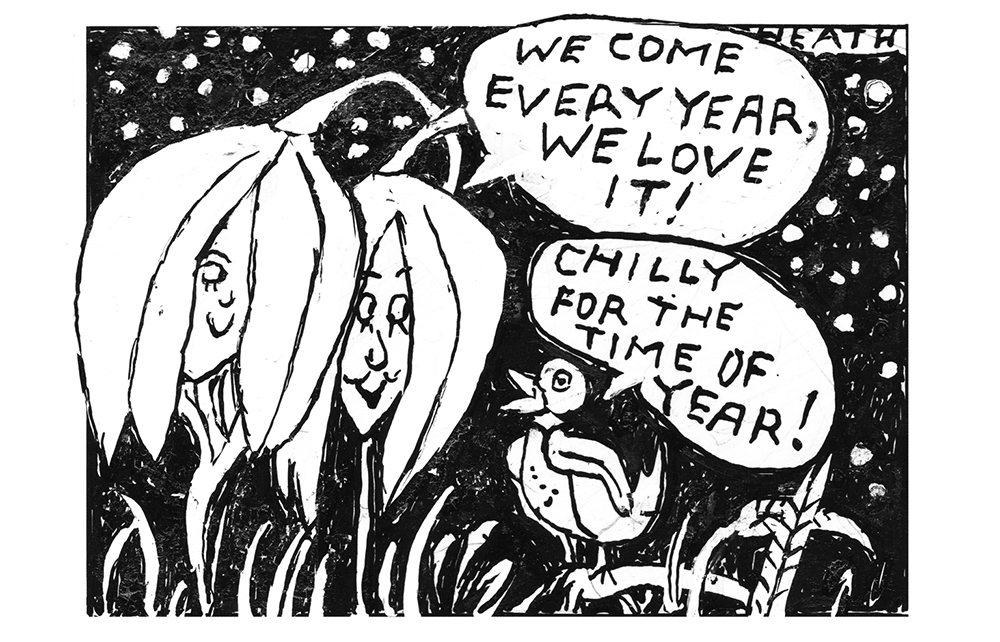Who does not love a snowdrop? The pure white of their pendulous petals may be chilly, but who cares when they flower in the chilliest months, often on their own, or accompanied only by hellebores and aconites. I grow a number of snowdrop species and cultivated varieties, as well as unnamed seedlings that seem to appear out of nowhere, since these bulbs are relentlessly promiscuous. They pop up especially in shady borders under deciduous shrubs or among evergreen and herbaceous perennials, and they are the best sight to greet me on my daily garden walks in January and February.
The word ‘galanthophile’ does not quite convey the fanaticism of the true snowdrop lover. These gardeners, blessed with a distinct botanist’s bent, spend the coldest days of the year in each other’s gardens, mainly on their knees, worshipping these diminutive gods with names like ‘Dionysus’, ‘Hippolyta’ and ‘Galadriel’, as well as mortals like ‘Mrs Macnamara’, ‘Lady Beatrix Stanley’ and ‘Bill Bishop’. That’s because only when you get down very low can you properly discern the markings on the inner ring of petals or ‘perianth’, which are often the only means of distinguishing one variety from another.
For me, the finest snowdrops are those which are cultivated forms of the Turkish Galanthus elwesii, for they are twice the height of the most commonly grown G. nivalis, more robust in habit, have distinctive blue-green leaves and flower a month earlier. The inner perianth, which is notched at the apex, is white with intriguing basal green markings. I grow a cultivated variety of G. elwesii, which was selected by Oliver Wyatt (1898-1973), the headmaster of a prep school not far from where I live in Northamptonshire, and the first man to be called a ‘galanthophile’ – by his more famous gardening friend E.A. Bowles. ‘Maidwell L’, so-called, begins to flower in the first week of January and doesn’t finally go over until the middle of February. The inner petals have striking, thick green crosses on them. In the recent frosty weather, the leaves and flower stalks wilted but they soon recovered when the temperature began to rise.
My snowdrop varieties seem to thrive on total neglect, in a heavy clay brash soil where other bulbs struggle. If you want to separate and multiply your snowdrops or share them with friends, the best method is to dig them up when the flowers have gone over, but before the leaves die down completely and replant them immediately. This gets over the problem of not being able to find them to dig up later in the year.
If the prospect of an indoor Sunday in February doesn’t appeal, may I suggest you go looking for snowdrops in flower in large public gardens, where Galanthus nivalis and other good ‘doers’ like G. ‘Atkinsii’, have been encouraged to establish themselves in great drifts which, at a distance, resemble melting snow. Colesbourne Gardens and Painswick Rococo Garden in Gloucestershire, Hodsock Priory in Nottinghamshire, Anglesey Abbey in Cambridgeshire, The Garden House, Buckland Monachorum in Devon, Cambo Gardens in Fife, the National Botanic Garden of Wales in Carmarthenshire and Rowallane in County Down are just a few of the places where galanthophilia is positively encouraged.






Comments